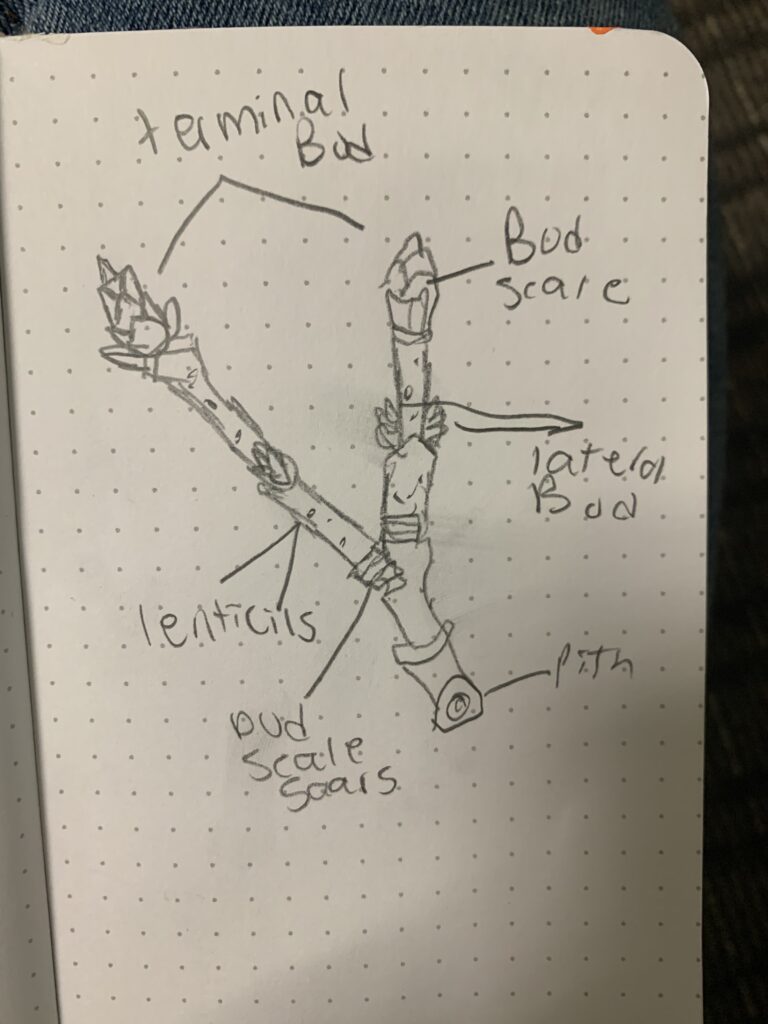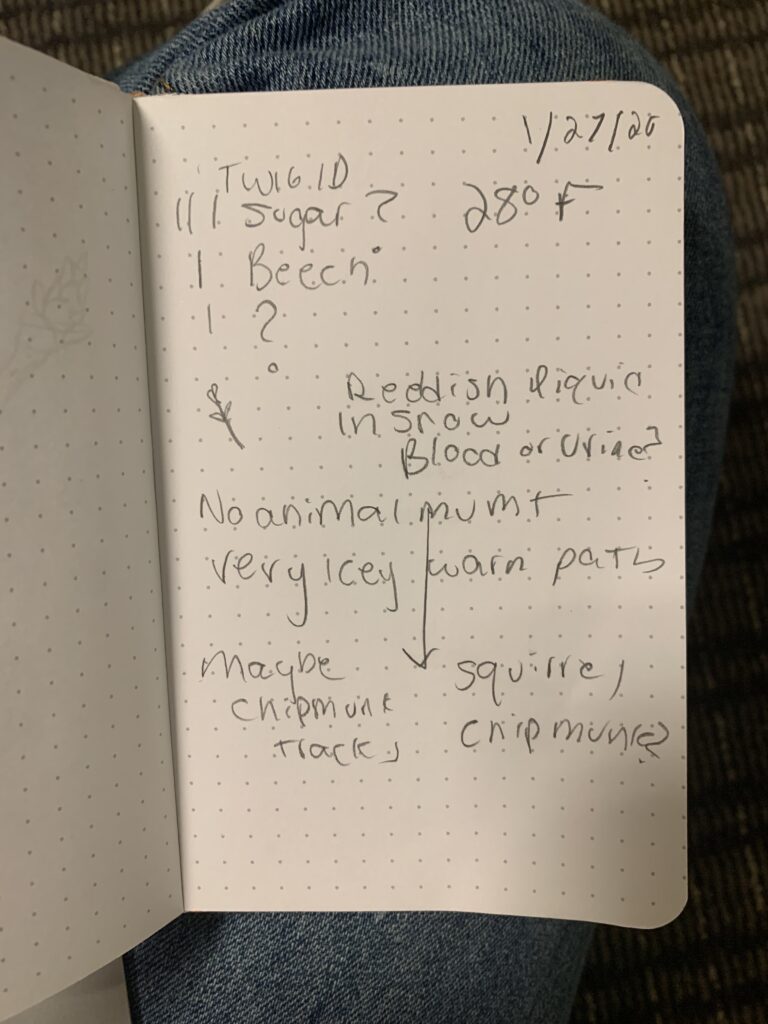It has been a while since I have last visited my spot. It looks different but it is comforting to know underneath all the snow, it is still the same. While it goes through its natural changes, the sun that lights up the canopy is still the same, many of the resident squirrels still call this home from the fall, and the thick trunks of the maples still stand strong.
Phenological changes:
Pretty much all the leaves have fallen from the trees except for a few scare conifers. The bustle of chipmunks and hawks and squirrels I saw in the fall is gone, the woods are much more quiet. The quarry pond I’ve walked past several times before was almost entirely frozen for the first time! All the ground cover trees are covered in snow.
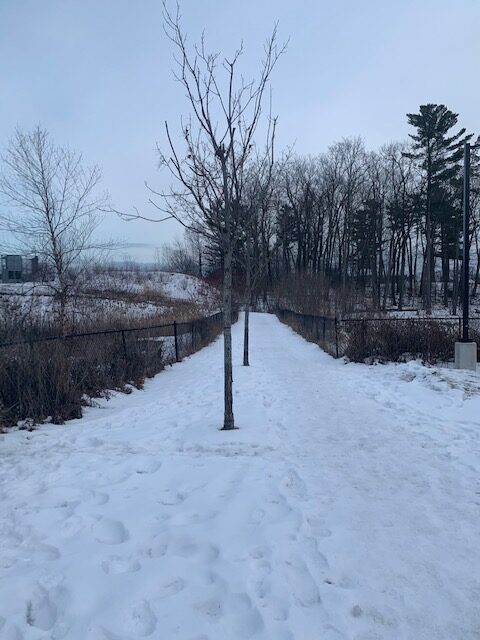
Figure 1. (2020) Pathway to my phenology blog. 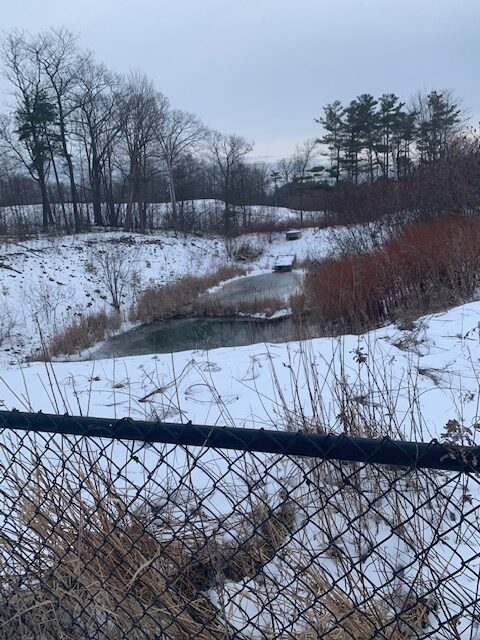
Figure 2. (2020) The quarry next to the Redstone woods. 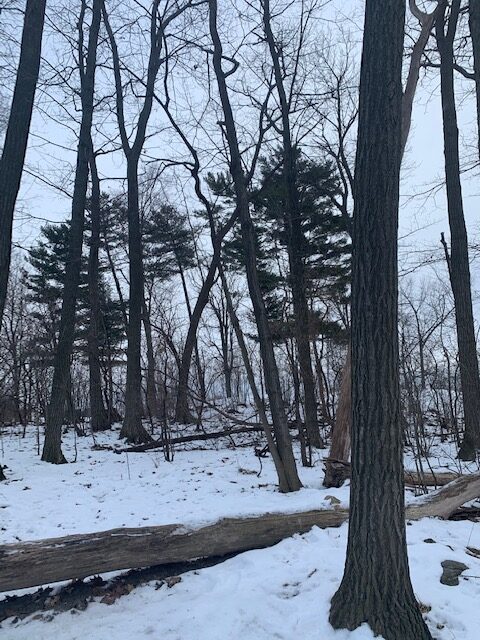
Figure 3. (2020) A picture of my site covered in the snow. 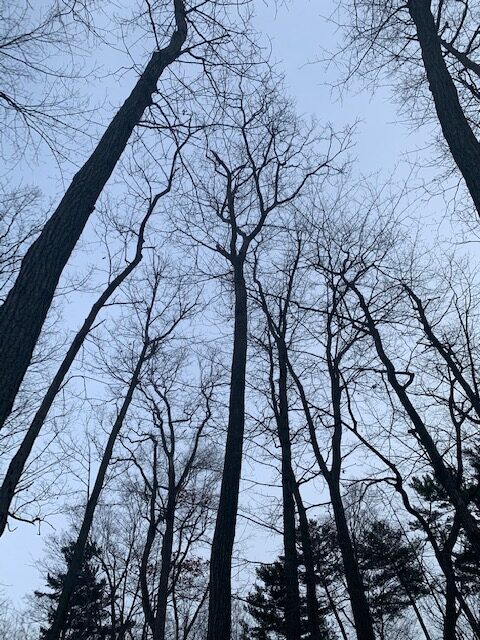
Figure 4. (2020) The canopy view of my phenology spot , moist of the trees are bare.
Tracking
Finding tracks here in the woods was initially difficult. Many were muddled or very hard to identify but what I did see a lot of is squirrels. What I identified as grey squirrel tracks were the most abundant tracks I was able to find. Grey squirrels are bounders, so their back feet are in front of their front feet in the tracks. The hid feet are longer than the front. But I can also tell that these tracks are from a tree dwelling creature as opposed to a ground-dwelling bounder, because the front feet are directly next to each-other as opposed to skewed. I compared the newer tracks to my ID book and found they are more similar to grey than red squirrels. Which makes sense since I documented many grey squirrels back in the fall.
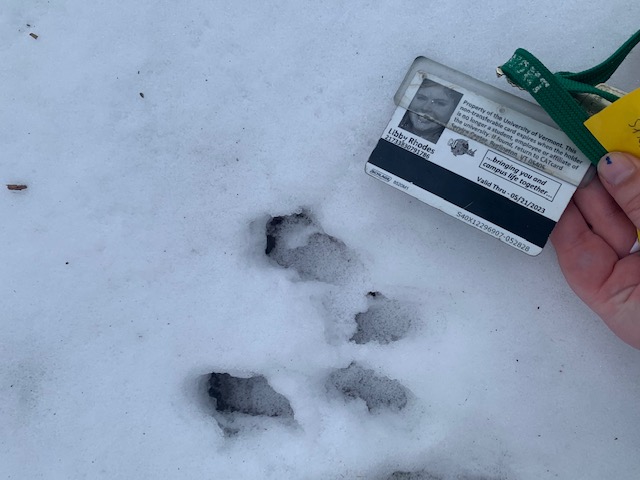
Figure 5. (2020) Older Grey Squirrel tracks next to my cat card for size reference. 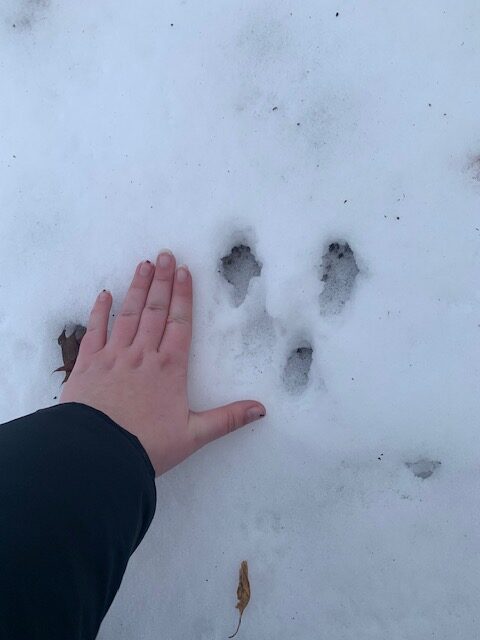
Figure 6. (2020) More old Grey Squirrel tracks near my hand for size. 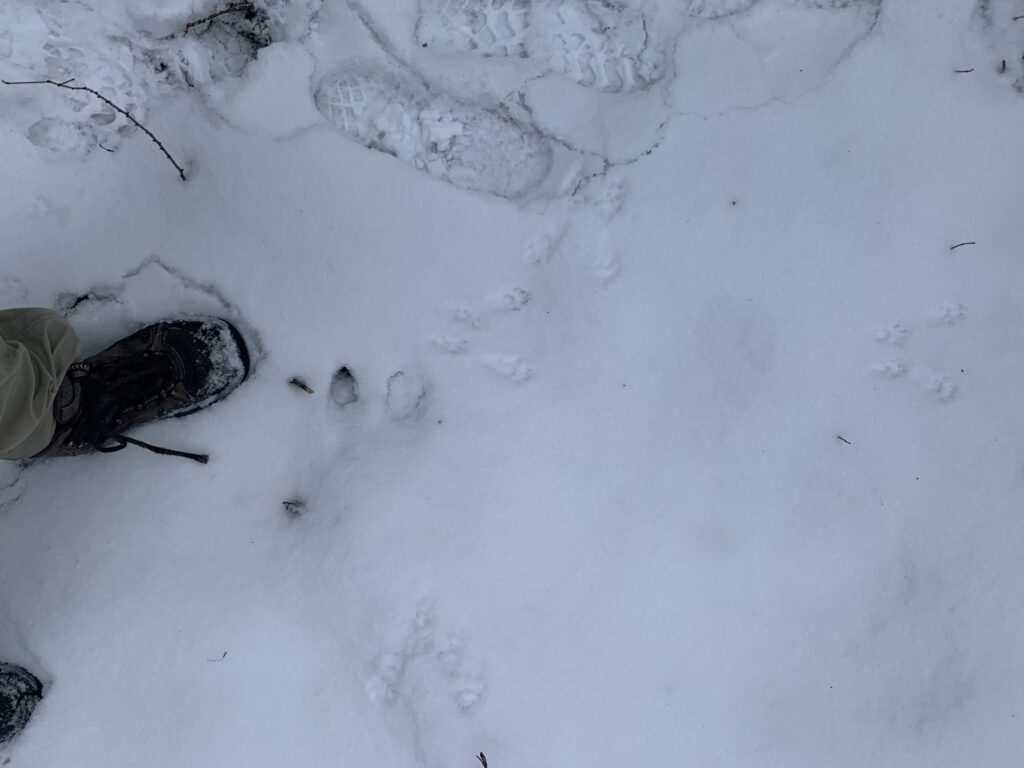
Figure 7. (2020) Grey squirrel tracks leading to and from a tree 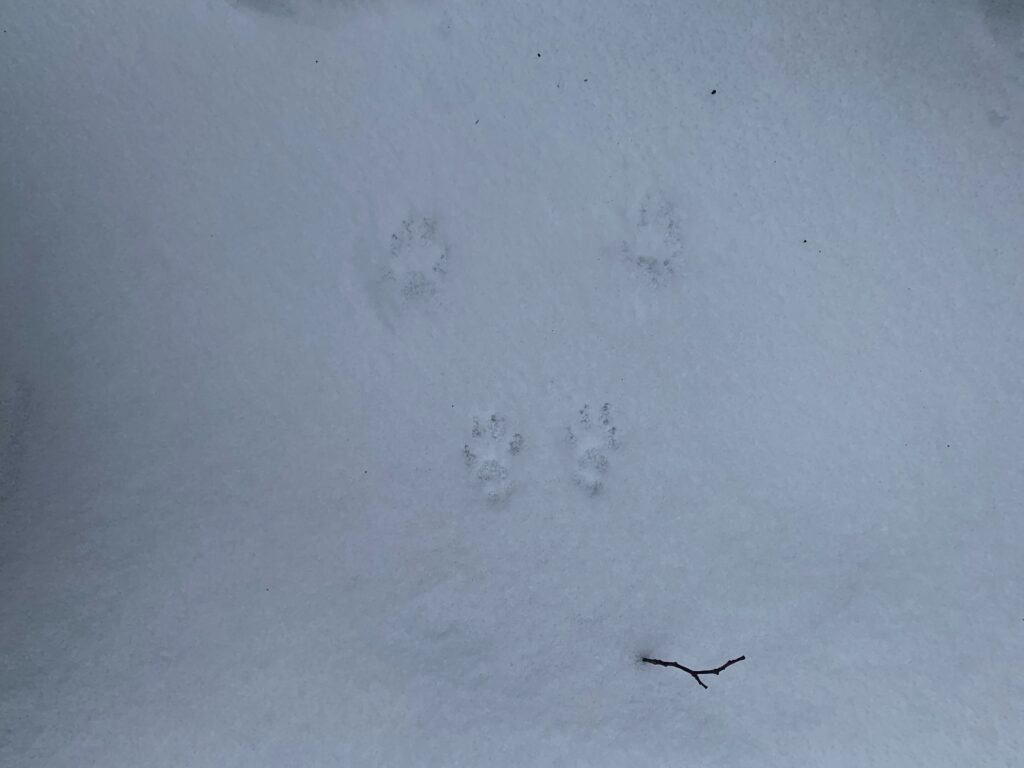
Figure 8. (2020) Grey Squirrel Tracks on fresh Snow.
Separately I found some other interesting indicators of animals in my spot!
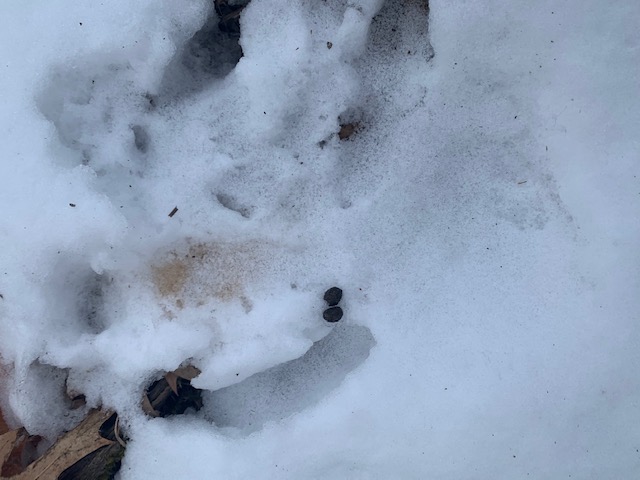
Figure 9. (2020) Scat! I would assume it is grey squirrels based on the photos I googled and the size/shape. 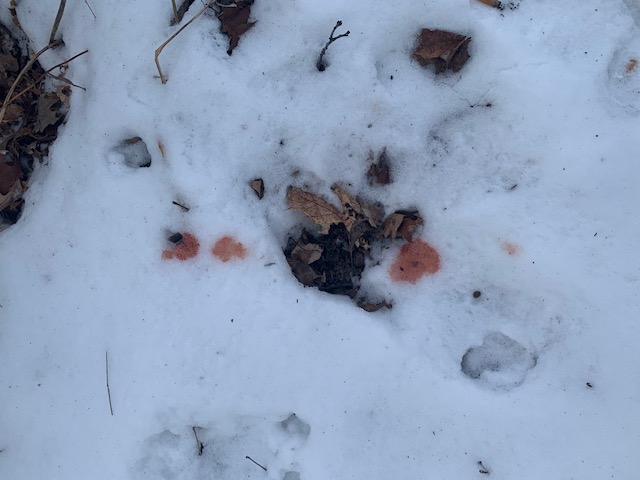
Figure 10. (2020)I initially thought this was blood but now think maybe some urine from a dehydrated animal? Still unsure. 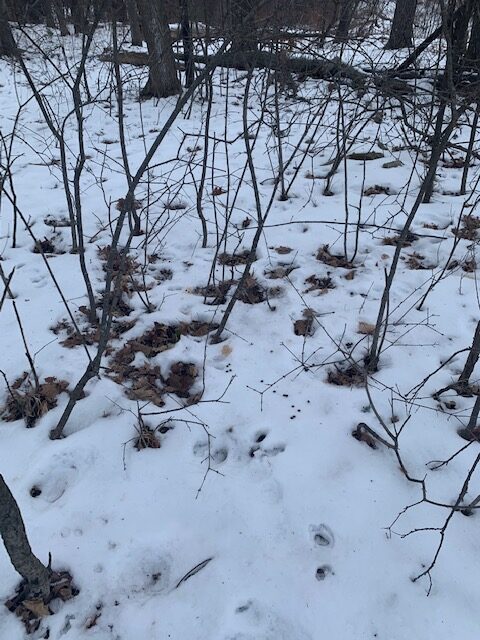
Figure 11. (2020) a whole series of scat and urine scattering the forest floor.
Twig ID:
Twigs! I feel I was finally getting good at identifying tree leaves when the started to fall. Buds are much harder. On some of the older growth tall trees like many of the sugar maples in my spot, I cannot even find branches to identify because the twig growth starts so high and I have to resort to bark ID. I could tell the twigs I identified were sugar maples because of their cone shaped buds, their opposite lateral buds, and the reddish brown color of the bark. Here is the list of twigs and trees I COULD identify:
(3) Sugar Maples 1 American Beech 1 Unknown
Here is a Sketch of a Sugar maple twig I saw, as well as some pictures!
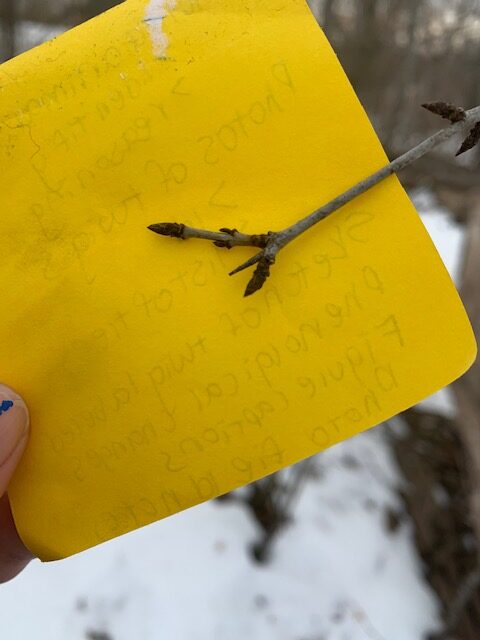
Figure 12. (2020) Sugar Maple 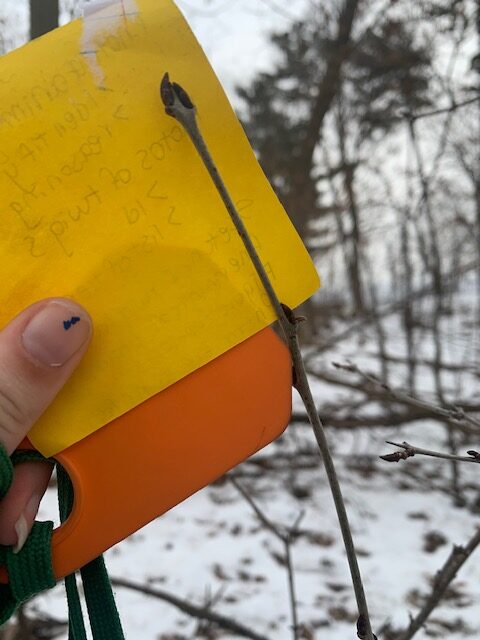
Figure 13. (2020) Maybe Sugar Maple? but I’m unsure 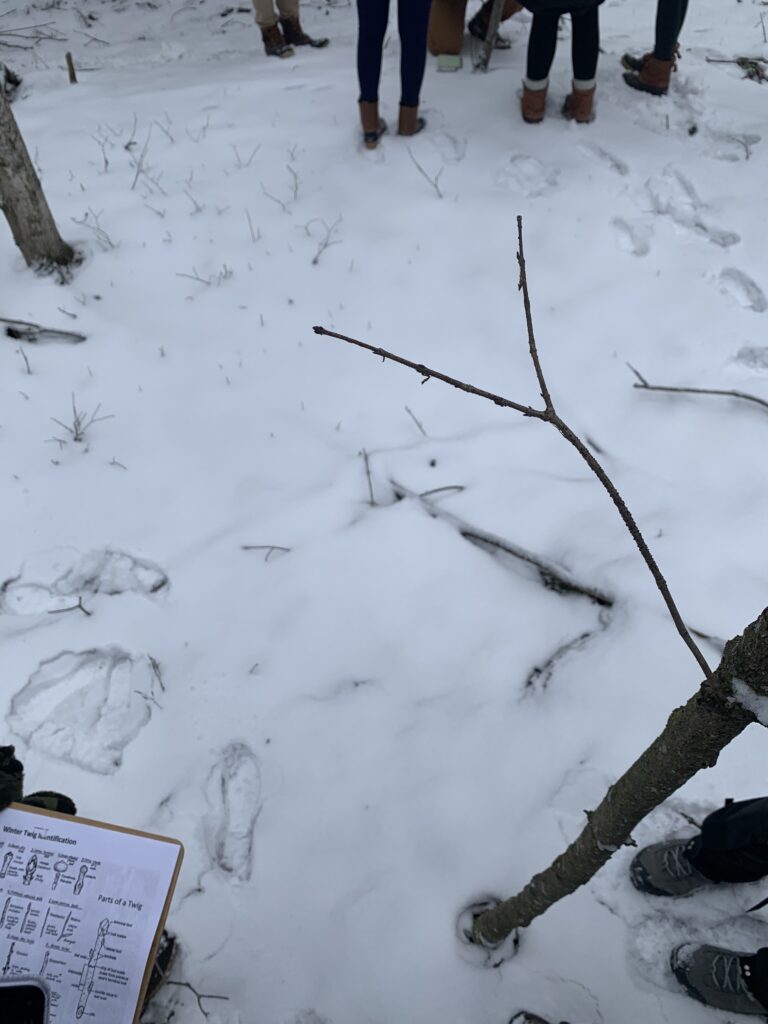
Figure 14. (2020) Sugar Maple
